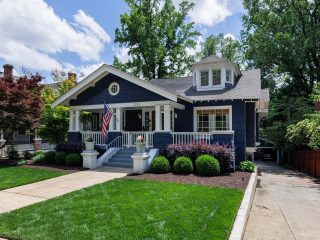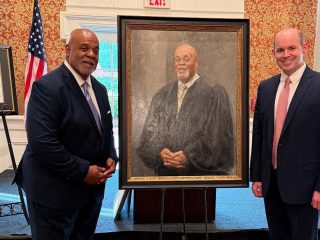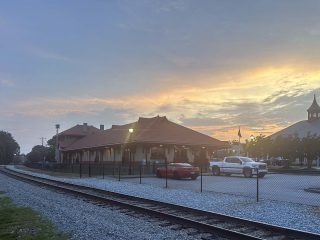
Rare Sears Roebuck kit home offers glimpse of Greenville history

A century and more before the internet put virtually every conceivable product at consumers’ fingertips, Sears, Roebuck and Co. pioneered the mail-order-catalog business and offered Americans thousands of products.
Sears offered people all over the country products that had traditionally only been available in larger towns and cities, from farm implements, tools and household staples to actual kit homes.

Known as Sears Modern Homes and sold from 1908 to 1940, out of an estimated 70,000-plus homes sold there are only two known in Greenville and one of them, on East Park Avenue, recently hit the market and is under contract.
Some assembly required

According to research done by Robin Blackwood, who owns the home at 222 E. Park Ave. with her husband, Weston, the house was likely ordered in the early 1920s and built in 1925 by Pete Bybee.
The model chosen — The Ashmore — typifies Arts and Crafts architecture with its attention to detail and emphasis on American craftsmanship. As such, it was one of the more expensive models Sears offered; the expense made it relatively rare.
Depending on features, the Ashmore ranged from $1,608 to $3,632 in 1925, which equates to $29,541 to $66,725 in 2025 dollars.
While the exact amount Bybee paid for the kit is unknown, it is known the more than 30,000 parts needed to build the house arrived by rail at the Washington Street depot and were later constructed on the East Park Avenue lot.
The arrival by rail is important to note. Throughout the period, upward of 70,000 Sears homes were sold, and transportation by train was effectively the only way to deliver the thousands of parts needed.
While the company’s records of exactly how many homes were sold and where they were sent have long since been lost, researchers suspect as many as 40,000 or more remain. They’ve been identified all over the country, but most appear to be in the Midwest and Northeast, where rail service was more widely available.
Sears offered more than 350 models of kit home ranging from little more than a camping or vacation shack to veritable mansions.
Because they were effectively an industrial product using economies of scale and many assembly-line-production methods, the kit homes introduced housing affordability decades before a similar approach brought down costs for modular and manufactured homes.
And as Blackwood discovered during research on her home, Sears also offered financing options that gave even more people the opportunity to become homeowners.
Living history

In a very real sense, the Park Avenue home chronicles 100 years of American and Greenville history.
Bybee, the man who originally ordered the kit home and had it assembled in Greenville by a local contractor, immigrated to America from Greece when he was 11 years old.
He went on to become a consequential Greenville resident who nurtured a family in the East Park Avenue home, operated the popular restaurant known as the Sanitary Cafe, and was one of the owners of the Greenville Spinners baseball team.
The family owned the home into the 1990s until Bybee’s wife sold it in 1994 for about $89,000. Blackwood said the children, who have grown and long since moved away, stay in touch and occasionally return to visit the house and share stories of what it was like to grow up there.
Blackwood and her husband are the fourth family to own the home and have lived there for the past 20 years. Like any 100-year-old home, it has changed through the years but was extensively restored and renovated by the second owner.
 “I’ve loved learning about it,” Blackwood said. “I’m just glad I got to be part of this home’s history.”
“I’ve loved learning about it,” Blackwood said. “I’m just glad I got to be part of this home’s history.”
Overlooking McPherson Park and part of the East Park Historic District, the home, like many of its neighbors, is listed on the National Register of Historic Places.
Because of its unique history, character and location, the house has been a wonderful home from which to observe and experience Greenville’s continuing transformation over the past 20 years, Blackwood said.
The prospect of selling it to move to Beaufort to be near family is bittersweet, she said.
“We know we’ll never live in a house like this again,” she said.
Sears kit home fast facts
- Sold by mail order from 1908 to 1940 by Sears, Roebuck and Co.
- Somewhere between 70,000 and 100,000 kit homes are estimated to have been sold
- Shipped to customers throughout the country by rail as each home required thousands of parts, from pre-cut lumber, nails and structural elements to fixtures, door and window hardware, and other decorative elements
The post Rare Sears Roebuck kit home offers glimpse of Greenville history appeared first on GREENVILLE JOURNAL.










































